The Serpentine’s north gallery has been transformed into a magical space (main picture). Strung from floor to ceiling of the darkened room, shafts of copper wire glimmer in subdued lighting like sunbeams, or the searchlights that scanned the night sky for enemy aircraft during World War Two.
As you walk around them, the threads visually overlap to produce shimmering moiré patterns. The structure is extremely simple, but rather than diminishing its impact, figuring out how it is done only enhances its mesmeric effect. The installation is titled Web and weaving threads of light through space is a recurring theme in the work of Brazilian artist Lygia Pape, who died in 2004 aged 77, just as she was gaining the international recognition she deserved.
A series of woodcuts 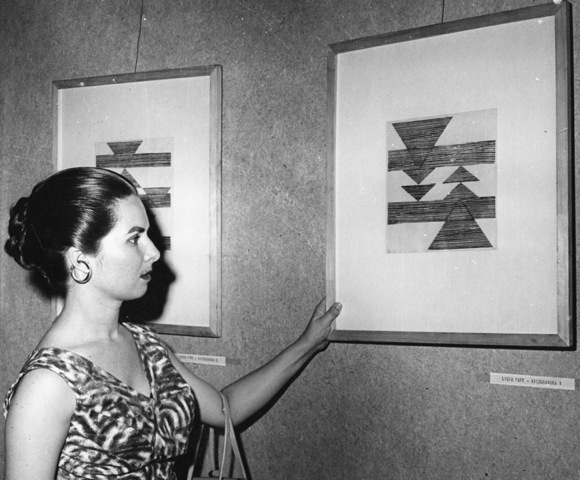 made in the 1950s is titled Weavings. Pape (pictured right in 1956 with Untitled: Weavings) first introduced pattern and texture by juxtaposing blocks of wood very different from each other. Then she began incising the blocks with delicate horizontal and vertical lines, which she described as “yarn weaving space” or ribbons of light. “Peeling off,” she wrote, “revealed white space… white – no colour – light – real space.”
made in the 1950s is titled Weavings. Pape (pictured right in 1956 with Untitled: Weavings) first introduced pattern and texture by juxtaposing blocks of wood very different from each other. Then she began incising the blocks with delicate horizontal and vertical lines, which she described as “yarn weaving space” or ribbons of light. “Peeling off,” she wrote, “revealed white space… white – no colour – light – real space.”
In 1957, she incised a square block with thin stripes then printed it in black to resemble pin-stripe suiting. Those familiar with Frank Stella’s seminal black paintings would immediately be struck by the similarity and, since he is a famous American Minimalist and she a little-known Brazilian, assume he had influenced her. But her woodcuts were made two years before his paintings and are accompanied by a series of exquisite ink drawings in which she further explores the potential of fine parallel lines (in this case black on white paper) to define space and create the subtle illusion of overlapping forms.
I was constantly surprised by the dates of the work; most pieces were done several years earlier than I expected. Pape was a founder member of the Neo-Concrete movement – a group of Brazilian artists influenced by early European abstraction, but whose work quickly adapted to their particular social and political situation.
Book of Time (1961-3) (pictured below) consists of 365 reliefs – small squares of wood with geometric shapes either cut from or added to the block and painted in primary colours. The effect is like a series of brightly coloured flags, letters or logos – very Bauhaus – but they are shown together as an installation which, by drawing attention to the making process, introduces the element of time; and as you look from one to another, the designs seem to morph before your eyes – as though they constituted the story board for a film sequence.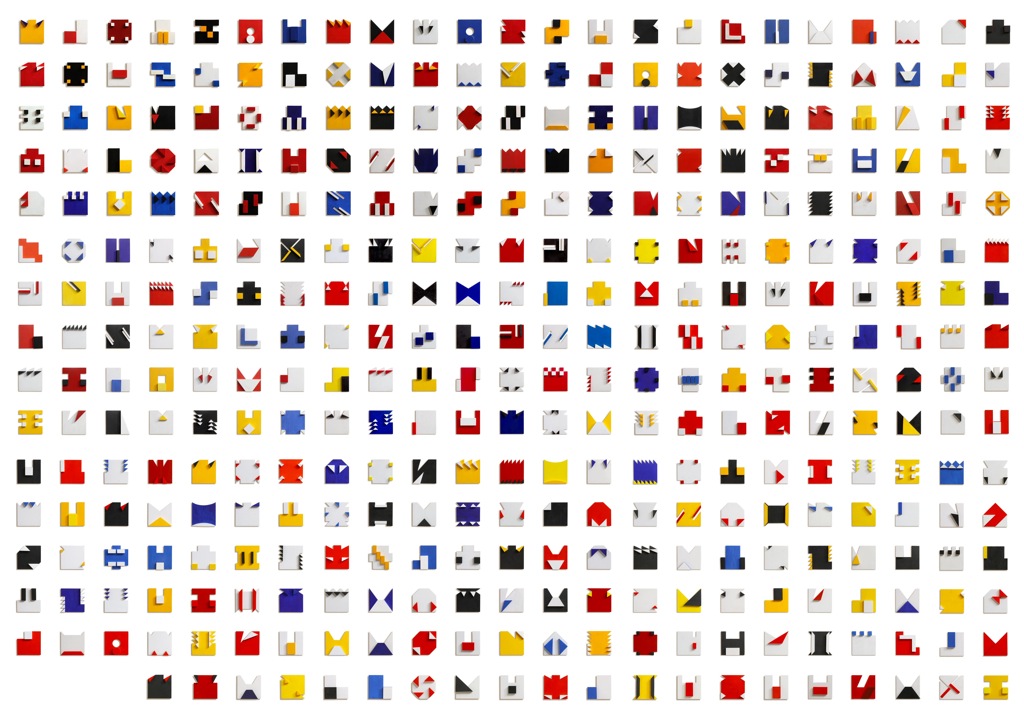 Pape had already made a film showing the manipulation of her Book of Creation (Book of Architecture, pictured below left), a series of pages cut into shapes that pop-up to form sculptural reliefs, and was soon to begin staging performances which she recorded on film. In 1967, for instance, a year before John Lennon and Yoko Ono spent a week in bed in an Amsterdam hotel as a Bed-in for Peace, Pape staged Divider in a favela near her home in Rio de Janeiro. The performance not only involved audience participation but required people to work together. Poking their heads through a grid of holes in a giant white sheet, participants had to co-operate in order to move about. A piece of harmless fun, you might think, but at a time of political repression when public demonstrations were banned, a gathering of this kind provided a vital opportunity to experience collective action, and Divider has since been seen as an expression of the power of mutual co-operation.
Pape had already made a film showing the manipulation of her Book of Creation (Book of Architecture, pictured below left), a series of pages cut into shapes that pop-up to form sculptural reliefs, and was soon to begin staging performances which she recorded on film. In 1967, for instance, a year before John Lennon and Yoko Ono spent a week in bed in an Amsterdam hotel as a Bed-in for Peace, Pape staged Divider in a favela near her home in Rio de Janeiro. The performance not only involved audience participation but required people to work together. Poking their heads through a grid of holes in a giant white sheet, participants had to co-operate in order to move about. A piece of harmless fun, you might think, but at a time of political repression when public demonstrations were banned, a gathering of this kind provided a vital opportunity to experience collective action, and Divider has since been seen as an expression of the power of mutual co-operation.
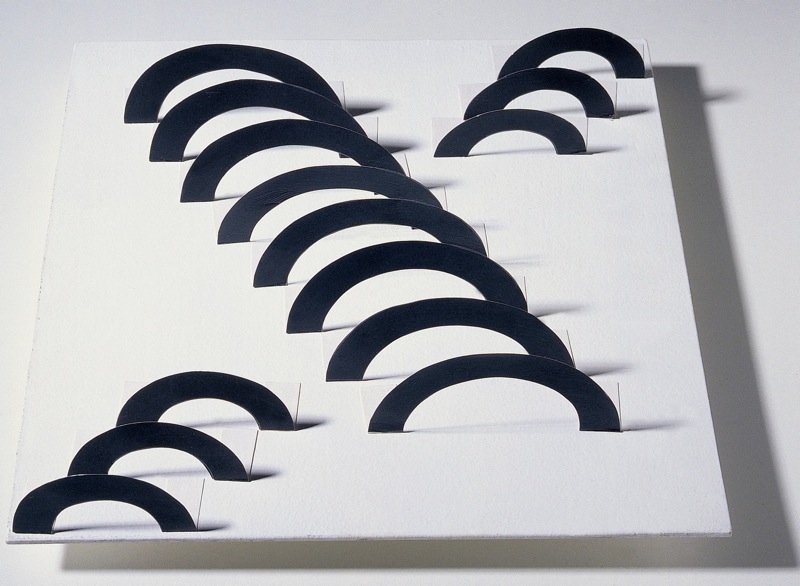 Pape may have been politically active, but her work is more poetic than ideological; it is also extremely varied and wide-ranging. The subtle beauty of the graphics, for instance, is at the opposite pole from the provocative hedonism of films like Eat Me (1975). Confronting you on entry to the gallery is a huge mouth framed by a moustache and apparently wearing lipstick. Filling the screen, the image runs the gamut from attraction to repulsion. The mouth opens to reveal a darkly glistening interior that is partly inviting, partly threatening; a tongue protrudes suggestively through pursed lips; cut to female lips sucking on a sausage smothered in ketchup, then back to the glittering orifice of the man’s mouth. The edits come at an increasingly frenzied pace until a climax of some kind is reached, though quite what we have witnessed remains unclear.
Pape may have been politically active, but her work is more poetic than ideological; it is also extremely varied and wide-ranging. The subtle beauty of the graphics, for instance, is at the opposite pole from the provocative hedonism of films like Eat Me (1975). Confronting you on entry to the gallery is a huge mouth framed by a moustache and apparently wearing lipstick. Filling the screen, the image runs the gamut from attraction to repulsion. The mouth opens to reveal a darkly glistening interior that is partly inviting, partly threatening; a tongue protrudes suggestively through pursed lips; cut to female lips sucking on a sausage smothered in ketchup, then back to the glittering orifice of the man’s mouth. The edits come at an increasingly frenzied pace until a climax of some kind is reached, though quite what we have witnessed remains unclear.
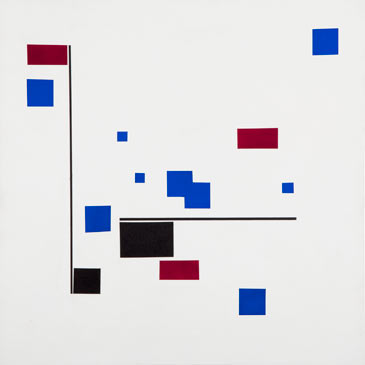 The link in Pape’s work between the twin poles of precise geometric abstraction on the one hand (Untitled 1954-6, pictured right), and somewhat chaotic performances and films on the other comes in the solo performance O ovo (1967). A white cube (the egg of the title) stands incongruously on the beach, like a stranded cultural relic. The skin of the cube is gradually torn asunder and the artist clambers out laboriously, as though struggling to emerge from artistic isolation into the real world – leaving behind the perfection and refinement of her paintings, graphics and reliefs for time-based media such as film and performance, and a visceral engagement with people and politics.
The link in Pape’s work between the twin poles of precise geometric abstraction on the one hand (Untitled 1954-6, pictured right), and somewhat chaotic performances and films on the other comes in the solo performance O ovo (1967). A white cube (the egg of the title) stands incongruously on the beach, like a stranded cultural relic. The skin of the cube is gradually torn asunder and the artist clambers out laboriously, as though struggling to emerge from artistic isolation into the real world – leaving behind the perfection and refinement of her paintings, graphics and reliefs for time-based media such as film and performance, and a visceral engagement with people and politics.
Distilled from a major survey in Madrid, this fascinating exhibition provides a glimpse of the career of an artist who lived and worked thousands of miles from the artistic centres of Europe and the States and therefore, during her lifetime, remained largely invisible; only now is the importance of her contribution being fully recognised.
- Lygia Pape: Magnetised Space at the Serpentine Gallery until 19 February, 2012
- Lygia Pape's films are at Hackney Picturehouse on 23 January, 2012

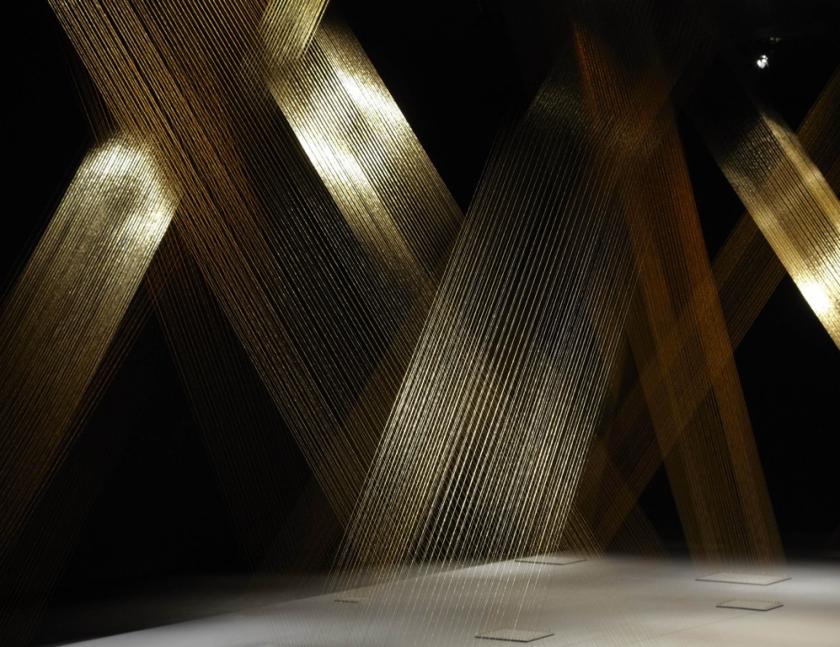







![SEX MONEY RACE RELIGION [2016] by Gilbert and George. Installation shot of Gilbert & George 21ST CENTURY PICTURES Hayward Gallery](/sites/default/files/styles/thumbnail_125_x_125_/public/mastimages/Gilbert%20%26%20George_%2021ST%20CENTURY%20PICTURES.%20SEX%20MONEY%20RACE%20RELIGION%20%5B2016%5D.%20Photo_%20Mark%20Blower.%20Courtesy%20of%20the%20Gilbert%20%26%20George%20and%20the%20Hayward%20Gallery._0.jpg?itok=3oW-Y84i)





Add comment